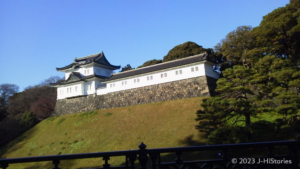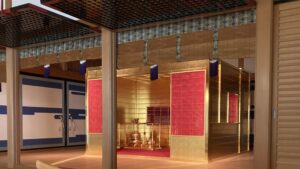Osaka Castle History: An unsurpassed Samurai Hideyoshi’s ambition to become a ruler of Japan
Osaka Castle was built by Toyotomi Hideyoshi. Along with the castle, its castle town, known as a "Water City," was also constructed. Unfortunately, the castle was burnt down during the Siege of Osaka in 1615 after Hideyoshi's death. Despite the destruction, the castle town demonstrated its logistical capabilities and played an important role as an […]
Tsurugajo Castle in Aizu, A symbol of samurai loyalty during the Meiji restoration
Bells rang in the center of the castle town of the Aizu domain, signaling the invasion of Meiji government forces. Despite the Aizu domain's allegiance to the Tokugawa Shogunate and generations of shoguns, the castle fell under incessant bombardment. This is in contrast to the Shogun's residence, Edo Castle, which surrendered without bloodshed. Why did […]
Explore Tokyo’s Imperial Palace: Edo Castle Ruins and the Legacy of the Samurai Era
Explore Tokyo’s Imperial Palace: Edo Castle Ruins and the Legacy of the Samurai Era
Nijo-jo Castle Watched the Rise and Fall of Tokugawa Shogunate
Nijo-jo Castle - a UNESCO World Heritage and National Treasure site - is a residence of successive Tokugawa shoguns in Kyoto. This stunning castle had witnessed the growth, development, fall, and eventual end of the Tokugawa shogunate. What was the final stage of the Tokugawa shogunate that Nijo-jo Castle saw? How did the last shogun, […]
The Golden Tea Room & Taian Tea Room
The walls, pillars, ceiling, and tea utensils covered in gold leaf reflect a solemn scarlet color in the Golden Tea Room through the scarlet woolen cloth on the Shoji screen. In contrast, Taian in Myokian Temple, a National Treasure, is the oldest existing tea room and one of three tea rooms of national treasures (Taian, […]
Himeji Castle History: “Win without fighting" by overwhelming beauty and impregnable defense
Himeji Castle - a UNESCO World Heritage site and the National Treasure - enthralls you with its amazing architectural beauty coalition with dazzling white walls and roofs made from stucco. Its shape is like Shirasagi (White Heron) spreading its wings. Why was it necessary to renovate it so spectacularly beautiful? The 1st Shogun of Tokugawa Shogunate, […]
Azuchi Castle, the first picturesque light-up event in Japan
The most powerful warlord, Oda Nobunaga (1534-1582, 織田信長), had a great zeal to realize a peaceful nation through his clever strategies, rationalism, and immense military power to end the Warring States Period. After seeing people’s joyful faces at the light-up event, he likely felt a deep sense of emotion and elation, realizing his lifelong ambitions […]
Osaka Honganji Temple: The Jodo Shinshu sect of Buddhism was divided into East and West
The Higashi (East) and Nishi (Eest) Honqanji Temples stand along Shichijo Street in Kyoto, less than 500 meters away. The Goei-do of the Higashi Honganji is the largest wooden founder hall in the world and enshrines the wooden statue of the founder, Shinran. The Nishi Honganji, a World Heritage Site, has remained intact to this […]
Tsurugaoka Hachimangu Shrine in Kamakura, The Birthplace of The Samurai Government
Tsurugaoka Hachimangu Shrine, the birthplace of the Samurai government esta blished by Minamoto Yoritomo in 1185 in Kamakura.
Enryakuji Temple Enlightens the World for over 1200 years
Enryakuji on Mt. Hiei was founded by Saicho. Producing founders of several sects, it's called the "Mother of Japanese Buddhism." Enryakuji fought against three warlords: Oda Nobnaga, Shogun, and its retainer.










